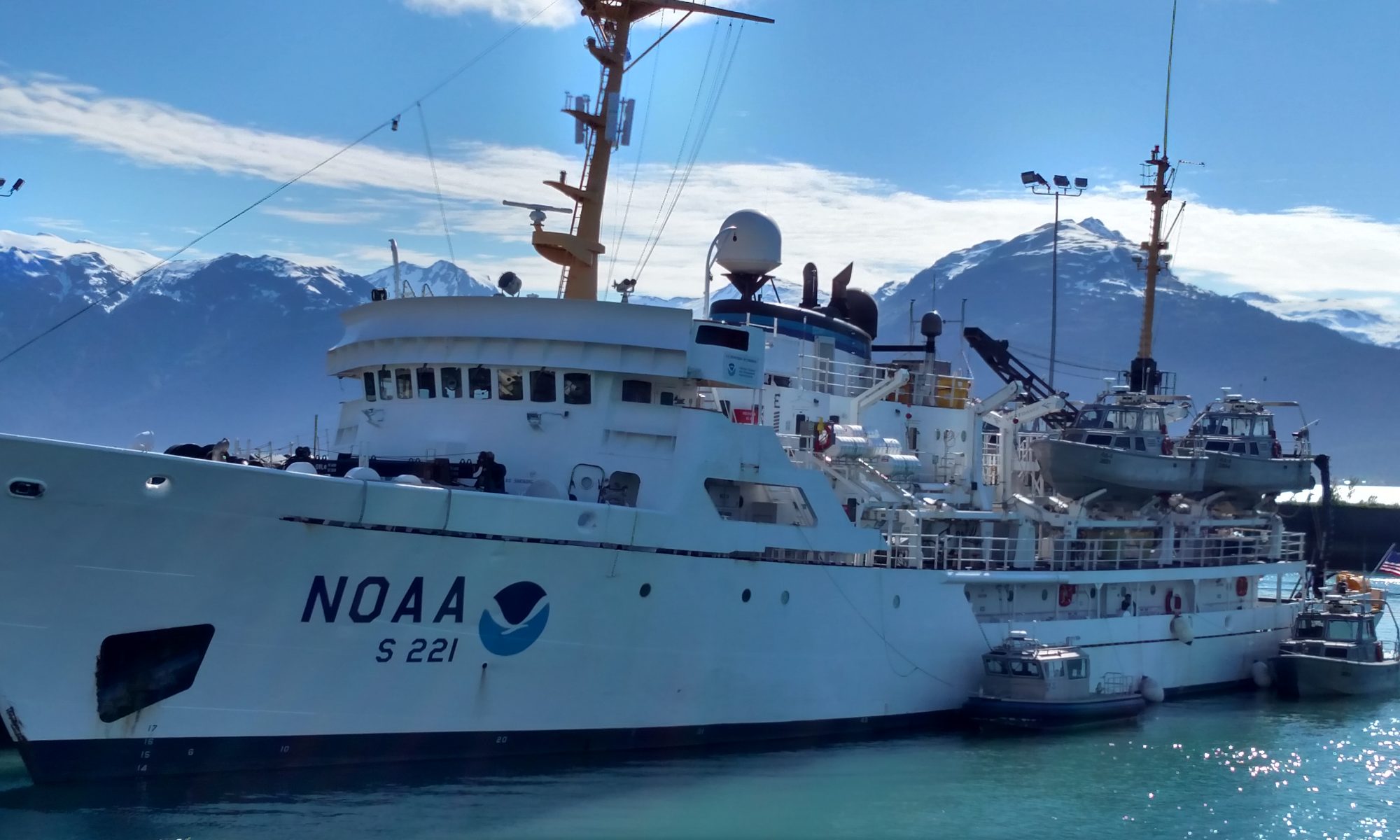NOAA Teacher at Sea
Kaitlin Baird
Aboard NOAA Ship Henry B. Bigelow
September 4 – 20, 2012
- Mission: Autumn Bottom Trawl Survey with NOAA’s Northeast Fisheries Science Center
Geographical Area: Back in port! Newport Rhode Island
Date: September 21st - .
Location Data:
Latitude: 41’53.04
Longitude: 71’31.77
Weather Data:
Air Temperature: 13.8 (approx.57°F)
Wind Speed: 10.01 kts
Wind Direction: North
Surface Water Temperature: 19.51 °C (approx. 67°F)
Weather conditions: overcast

Did you know?
Science crew operating on the back deck are required to wear an Overboard Recovery Communications Apparatus (ORCA). This system if it is activated sends a signal by way of radio frequency to a receiver on the ship’s bridge. This system responds immediately to the ship receiver and has a direction finder to help locate the man overboard.


Did you know?
Stargazers, like this one, have an electric organ and are one of few marine bony fish species that are able to produce electricity. This is known as Bioelectrogenesis. They also hide beneath the sand with just their eyes sticking out and ambush their prey!

Did you know?
This fish, the Atlantic midshipman, has bioluminescent bacteria that inhabit these jewel–like photophores that emit light! It also interestingly enough uses this function in fairly shallow waters!

Did you know?
Sea spiders like this one have no respiratory organs. Since they are so small gasses diffuse in and out of their bodies, how cool is that!

Did you know?
The flaming box crab, Calappa flammea, uses its scissor-like claws that act as a can opener. It has a special modified appendage to open hermit crabs like a can opener!

Did you know?
A female Atlantic angel shark like this one can have up to 13 pups!

Did you know?
Seahorses suck up their food through their long snout, and like the flounders I talked about at the beginning of the cruise, their eyes also move independently of each other!!

Did you know?
Horseshoe crabs, like this one, have blue blood. Unlike the blood of mammals, they don’t have hemoglobin to carry oxygen, instead they have henocyanin. Because the henocyanin has copper in it, their blood is blue!

Last but NOT least, Did you know?
According to the Guiness Book of World Records the American Lobster has been known to reach lengths over 3 ft (0.91 m) and weigh as much as 44 lb (20 kg) or more. This makes it the heaviest marine crustacean in the world! This one was pretty large!!

A big farewell to everyone on the Henry B. Bigelow! Thanks so much, i had a great time and learned a lot! Thanks for reading!

